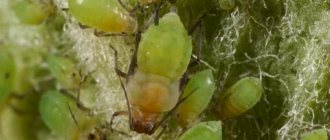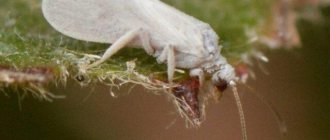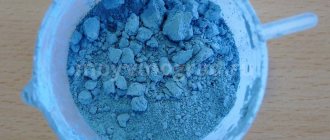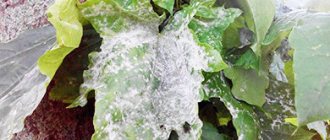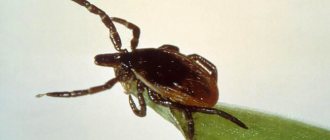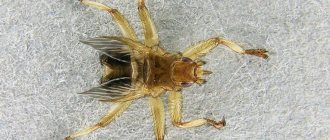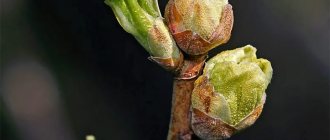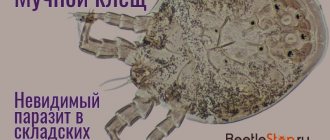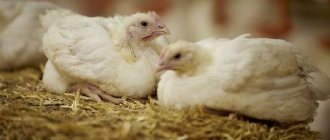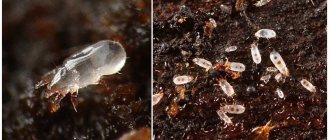The gall mite on a pear is not such a rare phenomenon. After all, they like this culture the most. If you do not control parasites in a timely manner, you can lose not only pear plantings, but also other fruit trees in the garden. Signs, causes of appearance, methods of getting rid of gall mites, preventive measures - this is what gardeners need to know.
What is a gall mite?
The gall mite or simply gall is a small parasitic insect that loves to feed on the sap of leaves. It itself is small in size and completely inconspicuous, but its place of residence, the galls, are clearly visible, dark burgundy and protrude above the surface of the foliage.
The peculiarity of the pest is that it is difficult to notice in small quantities and destroy it. Only during that period of time when the gall is on the surface of the leaf is it vulnerable. It is necessary to know the processing time and the correct control technology.
The drugs used to combat ticks are contact. Therefore, there are a number of treatments whose schedule must be followed. The pest easily moves around the area on its own, which also makes it difficult to combat it effectively.
Gall mite on a pear.
Life cycle of the gall mite
Typically, three full generations of ticks appear per season. The cycle of life goes like this:
- wintering takes place under the scales of buds;
- as soon as the buds open, the pests begin to lay eggs in the galls;
- the gall gradually dries out, and it contains adult mites, which, when cracking, get out and quickly spread;
- the first generation moves along the leaves of the tree and lays new eggs;
- the processes are repeated and already in mid-July the third generation appears.
What kind of pest is this
The gall mite can affect many fruit trees:
- pears;
- rowan;
- apple trees;
- hawthorn;
- quince;
- dogwood.
This insect is small in size: the body of an adult can be only 0.2 mm, it is elongated, with two pairs of limbs. Gall mites are classified as sucking insects. Most adult individuals of this pest are female; they awaken from hibernation already at temperatures above +10 degrees Celsius.
Females make three clutches during the summer. The first two generations live on fruit trees, lay eggs there and feed on plant cell sap, and insects from the third clutch hide in the buds for the winter in July, from where they emerge the following spring and their life cycle repeats.
Most often in Russia, this tick is found in the Tula and Voronezh regions, as well as in Siberia.
Why does the pear gall mite appear in the garden?
There are a number of catalysts for the appearance and spread of gall mites on pears. These include:
- planting density;
- excess of phosphorus components;
- lack of timely cleaning of the tree trunk circle from carrion and litter;
- no pruning;
- an excess of insecticides that have no effect on ticks, but destroy dragonflies and ladybugs, which are natural enemies;
- chemicals that may be misused to increase fertility.
Galls: growths containing mite eggs.
Reasons for appearance
Caterpillars on roses - how to treat them
It is very important to know why mites appear on pear leaves. This usually happens if no treatment has been carried out in the spring for several years. The crown becomes too thick and the sun's rays cannot illuminate all the leaves.
In addition, the reason may lie in the fact that the gardener does not remove leaves and rotten fruits from the ground.
Finally, with an excess of phosphorus fertilizers applied in the fall, the risk of gall mite infection also increases.
Signs of a garden infestation
As already mentioned, the pest itself is quite small and inconspicuous. But galls, yellowish-brown growths, are easy to notice. They gather into formations that spread along the perimeter of the leaf. Visually, it becomes deformed, loses its color and elasticity.
If the pest is not removed in a timely manner, the leaves become completely covered with growths. Because of this, metabolic processes are disrupted. The pear's immunity decreases, so the tree becomes more susceptible to pests and diseases.
What harm does the pear do?
The pear gall mite is not capable of destroying an adult pear. But it contributes to the deterioration of the immune system, which means the tree will not be able to fight numerous fungal and infectious diseases. The appearance also suffers greatly. As for young pears. Then the tick contributes to:
- a significant reduction in the number of fruits;
- damage, destruction of ovaries and buds;
- destruction of the kidneys;
- slowing down the development and growth of young shoots.
Since the tick overwinters in the kidneys, the damaged areas freeze. The tree cannot obtain the elements necessary for nutrition, which in severe frosts will accelerate the decline in immunity. Subsequently, the pear will die.
How to remove gall mites from the garden
The gardener himself chooses the means and methods. They often depend on the degree of infection, the presence of other pests in the garden, seasonality, and the condition of the fruit.
3 agrotechnical ways to reduce tick numbers
Such methods will help reduce the number of pests and prevent their appearance on the site. Although on a large scale they will not be effective.
Method number 1: feeding
Mineral fertilizers in the summer will not only help stimulate the growth of the vegetative part, but also prevent the spread of mites.
The principle of operation of this method is very simple: fertilizing fills the plant with vitality and reduces the amount of cell sap.
As a result, the ticks simply have nothing to eat, and they leave the trees in search of another more comfortable place to live.
Method No. 2: sanitary treatment of wood
Proper sanitary pruning and stripping of old bark will help disturb the places of residence of pests and thereby reduce their numbers. This also includes timely whitewashing.
Method No. 3: working in the tree trunk circle
If you keep the tree trunk clean and tidy, the risk of pests is minimized. You just need to promptly remove weeds, leaves and carrion.
Cleaning up carrion will help maintain the health of the pear tree.
5 effective chemicals
Treatment with special chemicals will help remove pests from the tree quickly and efficiently. But here it is necessary to take into account a number of requirements and features:
- cannot be used during flowering;
- can harm beneficial insects;
- Do not use later than 30 days before fruit ripening.
Karbofos
Karbofos.
This drug is an organophosphate insectoacaricide with contact-intestinal action. The active drug malathion has a paralyzing effect on pests and quickly destroys them.
It is available in the form of a dry powder, less often in the form of a suspension, and a ready-made solution is also available. It must be used for spraying strictly according to the instructions.
Aktellik
A contact action acaricide with fungicidal properties. Use strictly in accordance with the instructions, twice a year. The last treatment is no later than 21 days before the pears ripen. Very toxic to people and animals.
Actellik: effective, but not entirely safe.
Fufanon
A universal drug against many pests based on malathion. The product is effective against sucking pests and acts very quickly, up to 2 hours after entering the animal’s body. Non-toxic if used according to instructions.
Effective Fufanon.
Nitrafen
A complex fungicide that negatively affects pests and destroys spores of pathogenic fungi, thereby protecting the plant from scab and powdery mildew. It is necessary to spray the solution in the specified dosage.
Intavir
A contact insecticide that is used only in the spring before bud break or after harvest. Toxic to bees and other insects.
3 proven folk remedies
These products are also effective, although slightly less effective than chemical drugs and last longer. But they do not harm bees during the process of pollinating pears and can be used even during harvest.
| Marigold decoction | To prepare the composition you need to use 100 grams of flowers per 1 liter of water. Boil the mixture, leave for 5 days and add a liter of clean water. The solution after straining is ready for use. |
| Infusion of potato tops | To prepare a working solution for spraying, pour 1 kg of chopped potato tops into 10 liters of warm water and leave for 4 hours. Before use, strain and pour in a little liquid soap. |
| Dandelion infusion | Dandelion leaves are used for preparation. For 3 liters of water you need to use 1 kg of chopped green parts of the plant. The drug is infused for 3 days, filtered, and liquid soap is added before spraying. |
Why is this pest dangerous?
Of course, this small insect will not be able to destroy the pear tree completely. It feeds on the cell sap of leaves and fruits, deforming them. In this case, the yield is sharply reduced, but does not pose a particular danger to fruit trees.
A mite with a spiny mouth pierces leaf blades and fruits; pathogenic microorganisms - bacteria, viruses or fungal spores - can enter through the holes. These diseases can undermine the immunity of fruit trees; not only leaves and individual branches die, but also the trunk and roots. And the cell sap flowing from the puncture sites attracts other bugs with its smell.
When the female pests “go” to the buds of trees for the winter, they begin to feed on their contents long before the leaves bloom. As a result, the leaf plates grow deformed and their size becomes smaller than usual. As a result, such foliage does not participate in photosynthesis, which is why all parts of the trees do not receive enough nutrients. Gradually, damaged foliage dries out and falls off prematurely.
If females overwinter in flower buds and damage them, the ovaries do not form or fall off without having time to develop normally. As a result, only 5% of the expected harvest can ripen.
Winter moth
These pear pests are as dangerous as hawthorn. The moth can destroy crops and even plants. This is a large butterfly with a wingspan of about 3 cm. Only males have wings; females cannot fly. The moths are greenish-gray in color. They eat everything: buds, shoots, leaves and flowers. Plus they spread to neighboring trees and plants.
The fight against moth will be the same as against hawthorn. Pest prevention helps reduce infestation rates and prevent spread. To do this, remove old bark, disinfect cracks, remove moss and lichens, and lubricate them with varnish. Regularly lime the trunks and dig up the soil around the tree. No less effective are trapping belts that prevent insects from entering the crown.
Insecticides help against winter moth:
- Zolon,
- Nexin,
- Chlorophos,
- Oleocuprite,
- Metathion.
Pear Gall midge
The pear gall midge causes enormous damage to plants even at the larval stage. They get into the ovaries and eat the fruits from the inside. As a result, the pears turn black and fall off. An adult gall midge insect looks like a mosquito with long antennae, legs and veined wings. If prevention is not carried out in time, more than 90% of the crop can be destroyed.
You can treat pears against gall midges with Chlorophos, Metaphos, Phosfamide, Zolon, Dursban. This must be done before the buds form, so that insects do not get into the fruiting buds and destroy the pears.
In the spring, adults are caught using adhesive tape. Also in the fall, inspect the bark, treat cracks with an antiseptic and lubricate them with garden varnish. It is advisable to dig up the soil around it before winter and spring. The soil can be filled with Hexachlorane.
Agricultural techniques for control and prevention
The effect is achieved faster if the fight begins in the spring using agricultural techniques. This includes:
- The purchase of cuttings and seedlings should be from trusted suppliers. At the same time, be sure to check young pears for damage, dry, broken areas. If there are defects, it is better to refuse the purchase.
- Always remove fallen leaves and other plant debris. This is an excellent place for life not only for gall mites, but also for fungal spores.
- In order not to be afraid of the pest, carry out digging for the winter and regular loosening during the season.
- To strengthen immunity and increase resistance against parasites, add wood ash.
- For prevention, before and after flowering, spray with one of the protective preparations.
Mining moths
Moths are a dangerous pest that can easily deprive a crop. The 15 mm larvae feast on the fruits.
One of the varieties is leafminer moths. They chew out passages in leaves and pears, as a result of which the nutrition in them is disrupted and they fall off. This way you can lose almost the entire harvest.
Mining moths cause the following harm to plants:
- Reduces plant viability and impairs immunity. The plant does not winter well and may not survive frosts.
- The size of the leaf plates that carry out the process of photosynthesis and trap dust is reduced. As a result, the plant develops poorly.
- The pear's resistance to diseases and other pests decreases.
To prevent the spread of the pest, collect fallen pears and leaves in a timely manner, and dig up the ground under the tree. Most often, moths appear on pear trees from infected plants; they are brought by the wind.
In addition to preventive methods of combating leaf miner, chemical insecticides are used. In the spring, before buds form, treat the pear against the pest with Zolon, Metathion, and Phosfamide.
Biological drugs
Biological products are more expensive, but more beneficial for plants and humans. They are safe and can be used during the flowering period, while chemicals are strictly prohibited.
Vertimek
The drug belongs to the insectoacaricidal group. Contains avermectins (a waste product of fungi).
A contact action substance penetrates the tick’s intestines and acts on the nervous system. The gall mite is not able to resist Vertimek and is not accustomed to it. Treatment is carried out on both sides of the leaf, along the circumference of the trunk.
Fitoverm
It is advisable to use a biological insecticide before bud break and flowering. The second time after the flowers flew around.
Two times is enough to exterminate parasites, since the first spraying destroys wintering individuals, and the second is preventive and removes possible offspring.
Flower beetle
Flower beetles appear on young pears in the spring, when buds form on the pear. They feed on their juice. The insect destroys the entire crop.
Flower beetles are a type of weevil. The appearance of these beetles is a serious cause for concern. They bite through a flower bud filled with juice. The tree stops blooming and bearing fruit.
You can fight the flower beetle using agrotechnical, preventive methods and the use of chemical insecticides. In the spring, clean the bark, whitewash and install adhesive belts. The biological insecticides Decis and Kinmiks help.
codling moth
There are three types of codling moths: oriental, pear and apple. The first eats leaves, shoots and fruits, the second feeds on pears. The codling moth can infect all parts of the pear. The adult insect is similar to a moth that lays eggs. From them caterpillars hatch, causing the main damage to plants. They get inside the pears and eat the seeds.
You can get rid of the codling moth using agrotechnical and preventive measures. To do this, dig up the ground around the tree and remove fallen fruits and leaves in a timely manner.
Insecticides and biological agents help. Among the first are popular: Iskra, Karbofos or Fufanon. Biological drug - Lepidocid.
hawthorn
This is a voracious pest that will quickly destroy all leaves, flowers and buds. The tree will be left with bare branches.
The insect goes to hibernate in houses made of dry leaves. The easiest time to detect a colony is in the fall, when all the leaves have fallen.
Only timely methods of pest control can cope with the scourge. Experienced gardeners recommend removing all hawthorn nests from trees. And in the summer, pest butterflies can be collected from weed flowers in the evenings, where they sit for the night.
Hawthorn is afraid mainly of insecticides. Trees must be treated in the spring before bud formation begins.
